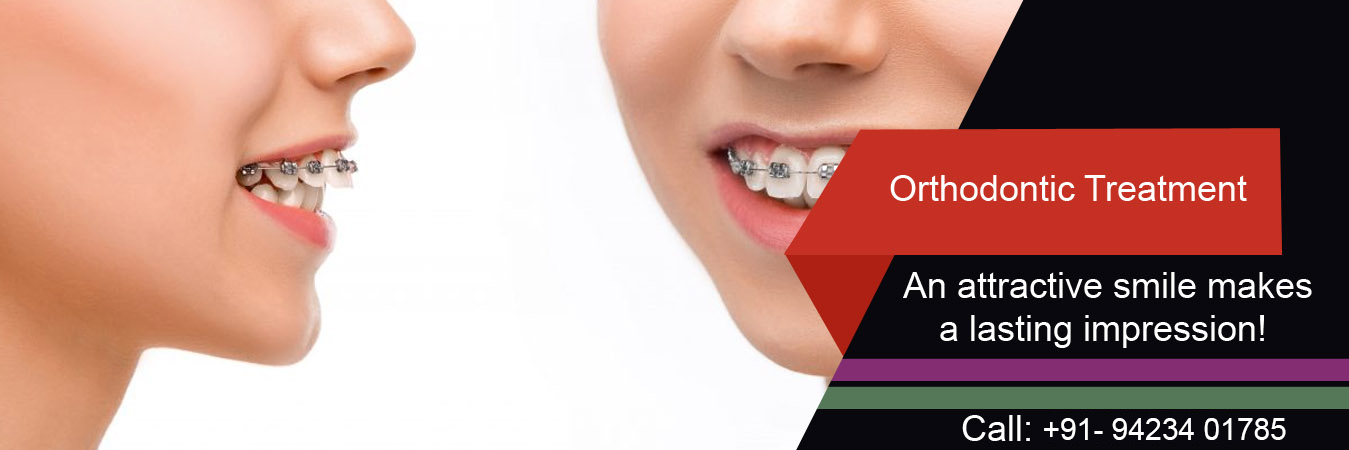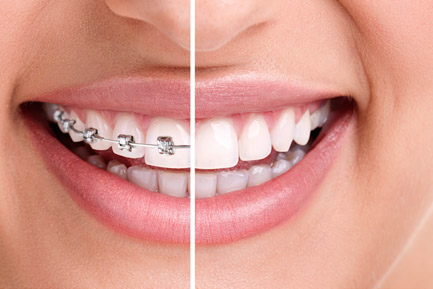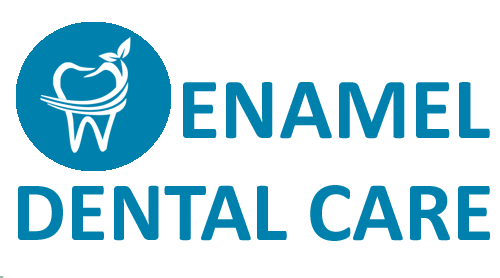
Orthodontic Braces treatment in Wakad Pune

- Medical and dental health history
- Clinical examination
- Making plaster models of teeth
- OPG, Cephalogram
An orthodontist can carry out work that aims to achieve the followings:
- Closing wide gaps between the teeth
- Aligning the tips of the teeth
- Straightening crooked teeth
- Treating an improper bite
- Improving speech or chewing ability
- Boosting the long-term health of gums and teeth
- Preventing long-term excessive wear or trauma of the teeth
Treatment can improve the appearance of the teeth, but it can also lead to better chewing and speech function and help protect teeth from damage or decay, in some cases.
General orthodontic treatments available are:
- Fixed braces: Fixed braces are the most common orthodontic appliance
- Removable braces: Removable braces can be used to correct minor problems, or as part of fixed-brace treatment
- Functional appliances
Fixed appliances
These are the most common devices used in orthodontics. They are used when precision is important.
A person can eat normally with fixed appliances, but some foods and drinks need to be avoided, such as carbonated drinks, hard candy, gum, and other sticky foods.
People who participate in contact sports need to tell their orthodontist, as they may need special gum shields.
Examples of fixed orthodontic appliances are:
Braces
These consist of brackets, wires, and bands. Bands are fixed firmly around the teeth and serve as anchors for the appliance, while brackets are usually connected to the front of the teeth.
Wires in the shape of an arch pass through the brackets and are fixed to the bands. As the arch wire is tightened, tension is applied to the teeth. Over time, this moves them into proper position.
Follow-up involves monthly visits to adjust or tighten the braces. Treatment may last from several months to a number of years.
Both clear and colored braces are available.
Fixed-space maintainers
If a child loses a baby tooth, a space maintainer will stop the two teeth at either side of the spaces from moving into it until the adult tooth comes through. A band is fixed to one of the teeth next to the space, and a wire goes from the band to the other tooth.
Removable space maintainers
These are an alternative to fixed-space maintainers.
Special fixed appliances
These can help control tongue thrusting or thumb sucking. They may be uncomfortable, especially when eating, and so they are only used if necessary.
Removable orthodontic appliances
These may be used to treat minor problems, such as preventing thumb sucking or correcting slightly crooked teeth.
The appliance should only be taken out when cleaning, eating, or flossing. Sometimes, the orthodontist may advice the patient to remove them during certain activities, such as playing a wind instrument or cycling.
Examples of removable appliances include:
Aligners: This alternative to braces may be useful for adults. They are virtually unnoticeable by other people, and they can be removed to brush the teeth, floss, or eat. An aligner is used for 2 to 3 weeks, then changed for a tighter one.
Headgear: A strap around the back of the head is attached to a metal wire in the front, or face bow. The aim is to slow down upper jaw growth, and keeping the back teeth in position while the front ones are pulled back.
Lip and cheek bumpers: These are specially made to relieve the pressure of cheeks or lips on the teeth.
Palatal expander: This appliance is designed to make the arch of the upper jaw wider. It consists of a plastic plate with screws that is placed on the palate, or roof of the mouth. The screws put pressure on the joints in the bones, forcing them outward. This expands the size of the area in the roof of mouth.
Retainers: These are used after treatment to stop the teeth from moving back to their original positions. If modified, they may also be used to stop children from sucking their thumbs.
